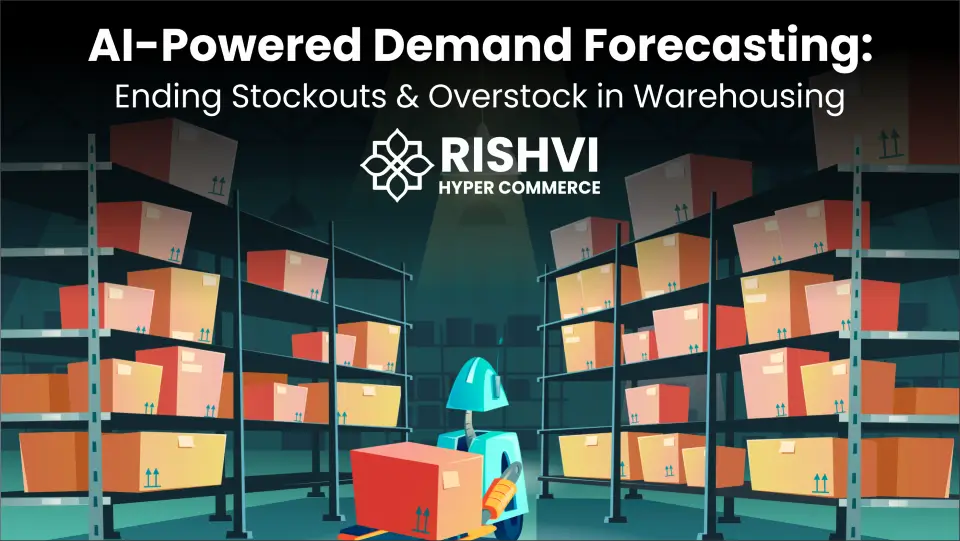
Running a warehouse has always been a balancing act. Keep too much stock, and you end up with products gathering dust on shelves, tying up working capital. Keep too little, and you risk running out just when customers need you most. For decades, businesses relied on historical sales data, guesswork, and spreadsheets to try to strike that balance. Sometimes it worked, but often it didn’t—especially when market conditions shifted overnight.
This is where Artificial Intelligence (AI) and Machine Learning (ML) are changing the game. Instead of looking backward, AI forecasting looks at real-time signals, patterns, and variables that humans and traditional systems usually miss. The result? Fewer stockouts, less excess inventory, and a smoother flow of goods through the supply chain.
Why Demand Forecasting Matters So Much in Warehousing
Demand forecasting is more than just a numbers exercise. It determines how efficiently a warehouse runs, how much money is tied up in stock, and how well customers are served.
- Stockouts not only lose sales but also damage customer trust.
- Overstock means wasted space, higher storage costs, and eventually markdowns or write-offs.
- Poor forecasts can throw off labor planning, transport scheduling, and even supplier relationships.
In short, accurate forecasting is the foundation of warehouse efficiency—and in today’s fast-paced markets, relying on old methods simply isn’t enough.
Where Traditional Forecasting Falls Short
Traditional methods usually lean on past sales trends and fixed formulas. While they offer some insights, they struggle when the unexpected happens. Think of sudden spikes during a viral eCommerce campaign, supply chain delays caused by weather, or unusual seasonal shifts.
These models don’t adapt quickly, and they leave businesses either scrambling to meet demand or stuck with unsold inventory. In industries where margins are tight and customers expect rapid fulfillment, that gap can be costly.
How AI and Machine Learning Change the Picture
AI forecasting takes a much broader and smarter approach. Instead of just relying on past sales, it pulls in data from multiple sources—customer buying behavior, promotions, marketing spend, supplier lead times, even factors like local weather or economic indicators.
Machine learning models then process all that information to find patterns that humans often can’t see. What makes this powerful is that the system keeps learning. Each new data point fine-tunes the model, making forecasts sharper over time.
For warehouses, this means:
- Real-time adjustments when demand shifts.
- Predictions that account for multiple scenarios.
- A proactive approach instead of reactive firefighting.
Real-Life Scenarios Where AI Forecasting Helps
- Seasonal Demand
A retailer heading into the festive season no longer has to rely solely on last year’s sales. AI looks at marketing campaigns, online search trends, and even weather forecasts to fine-tune stock levels. - Ecommerce Spikes
When a product goes viral or a flash sale kicks in, traditional forecasts fail to keep up. AI systems can react almost instantly, signaling warehouses to ramp up replenishment. - B2B Supply Chains
For manufacturers serving large clients, bulk orders can throw forecasts off balance. AI models anticipate these shifts by analyzing client order history and industry cycles, helping businesses stay prepared.
Why Businesses Are Turning to AI Forecasting
- Lower Inventory Costs: Less money tied up in unsold goods.
- Better Customer Experience: Products available when and where customers want them.
- Smarter Replenishment: Automated, data-driven decisions instead of gut instinct.
- Optimized Resources: Warehouses can plan labor, transport, and space more effectively.
- Higher Profit Margins: Fewer lost sales, less waste, and tighter operations.
Bringing AI Forecasting Into Your WMS
The good news is that AI forecasting doesn’t require building a complex system from scratch. Many modern Warehouse Management Systems (WMS) already integrate with predictive analytics tools or offer AI-driven modules.
A practical adoption roadmap looks like this:
- Get the Data in Order: Clean, structured sales and inventory data is the starting point.
- Pick the Right Solution: Either upgrade to a WMS with built-in forecasting or plug in an external AI tool.
- Test Before Scaling: Start small—say, with one product line—before rolling it out across the warehouse.
- Keep It Dynamic: Feed the system real-time data so it learns and adapts.
- Align Teams: Share forecasting insights with procurement, operations, and sales for cross-functional impact.
Done right, AI forecasting doesn’t just improve warehouse efficiency—it transforms the way the entire supply chain operates.
Forecasting demand will always involve uncertainty. But with AI, warehouses don’t have to play the guessing game anymore. Instead of reacting to problems like stockouts or overstock, businesses can anticipate them—and act before they happen.
The shift from static forecasting to AI-driven models is more than a technology upgrade. It’s a competitive edge. Companies that embrace it now are setting themselves up for leaner operations, happier customers, and stronger resilience in an unpredictable market. Connect for more!


